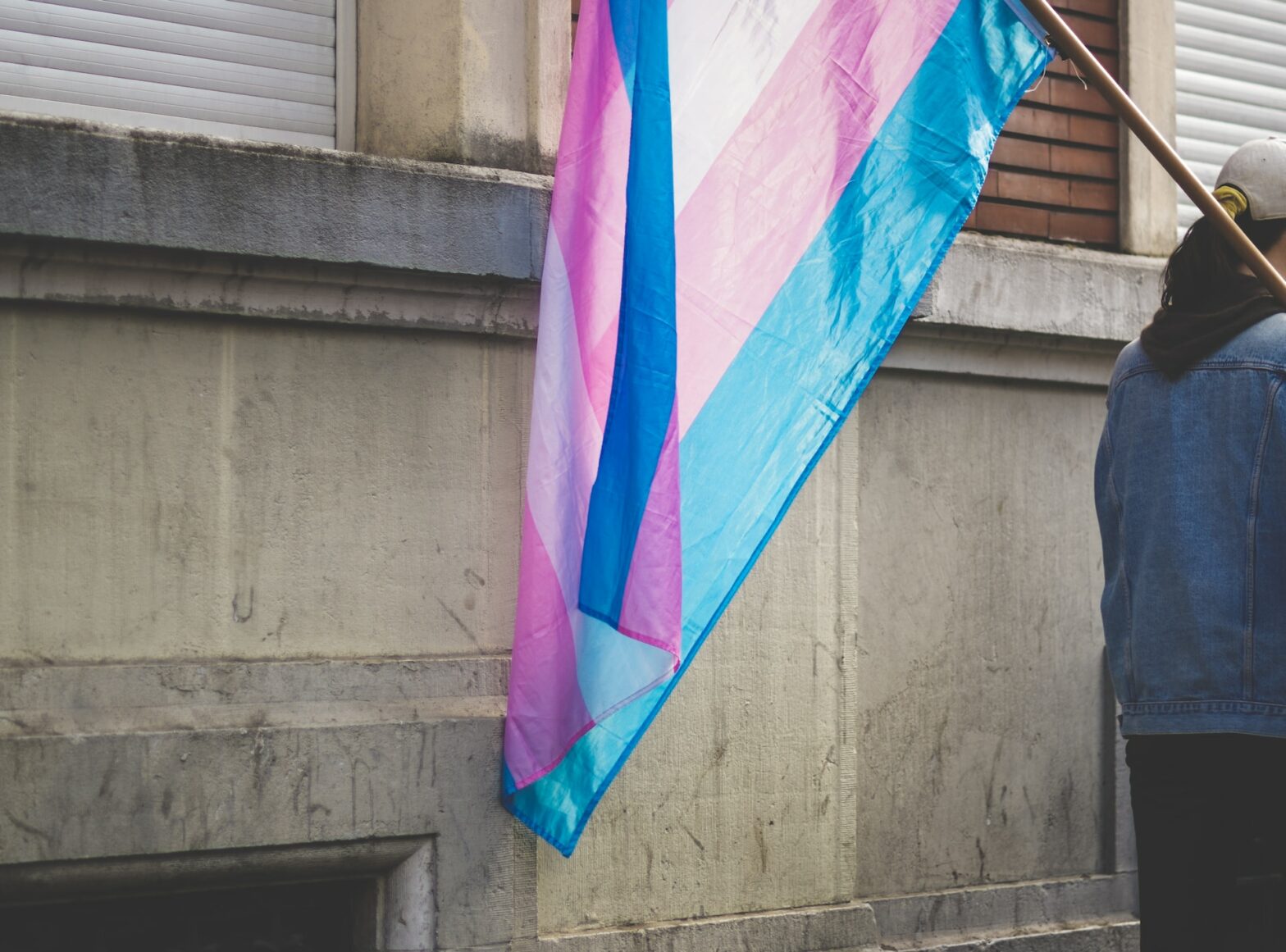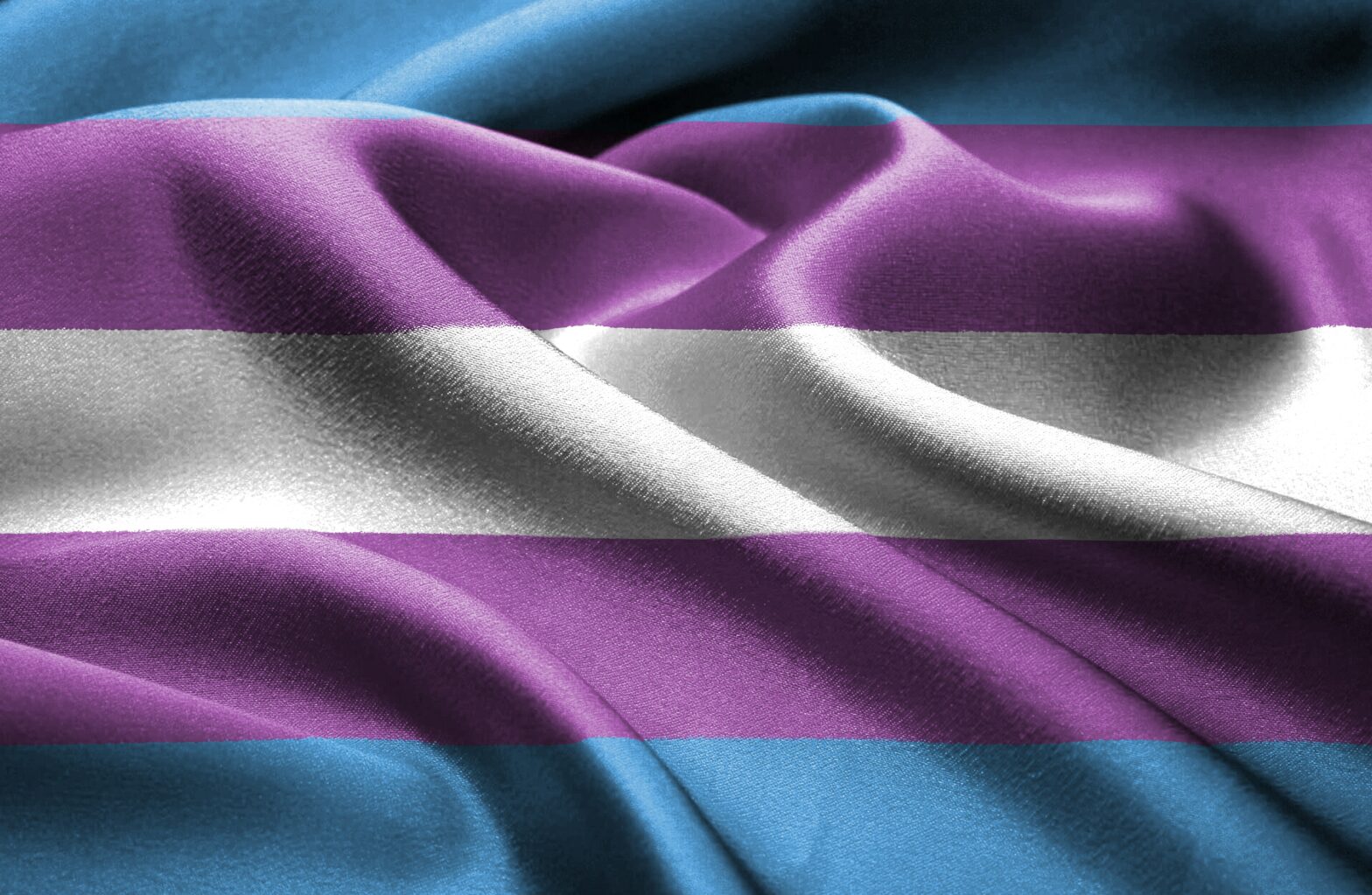Share Twitter Facebook Email Copy URL
This article is part of our series dedicated to the 75th anniversary of the Universal Declaration of Human Rights.
Introduction
In 2020, 0.005% of the total French population underwent a gender transition[1]. That is just one person in 20,000. However, the media regularly report on transidentity. It is a subject that both interests and draws people in.
Since 2015, trans media visibility has exploded. With it, an infinite number of stories about detransitions have also emerged. The growing visibility of transidentity has been accompanied by a backlash in the form of “sex change regret[2]” stories. The idea of an “explosion” of young trans people, accompanied by their share of regrets and detransitions, is frequently found in all types of Western media.
Definitions
Detransition: the process of stopping a gender transition by someone who thought they were transgender.
Transgender, trans: any person who does not identify with the gender assigned to them at birth.
Transgender man: A man, but who was assigned a girl at birth.
Transgender woman: A woman, but who was assigned a boy at birth.
Cisgender: Any person who identifies with the gender assigned to them at birth. Contrary to transgender.
Gender dysphoria: Discomfort experienced when there is a mismatch between the gender assigned at birth and the gender experienced.
Homosexual: Gender and sexual attraction are two separate concepts. A homosexual person is sexually attracted to a person of the same gender.
Between 2015 and 2018, the subject of detransition was mentioned more than 50 times in the US and UK media[3]. In contrast, between 2008 and 2018, 59 cases of detransition out of a corpus of 22,725 transgender people were recorded by the study by Danker et al. which represents 0.26% of the corpus of the study[4]. It could almost be said that every person who has transgendered has had his or her own newspaper article.
On 10 December 2023, Human Rights Day, we will celebrate the 75th anniversary of the Universal Declaration of Human Rights (UDHR). The core of this declaration is the protection of the rights of all people, “without distinction of any kind, such as race, colour, sex, language, religion, political or other opinion[5]“. However, according to the Transgender Europe (TGEU) report, trans people in Europe face discrimination based on their gender identity[6]. This discrimination severely limits access to medical care and creates considerable difficulties in the spheres of employment, housing and education. In addition, they are exposed to an increased risk of violence and harassment, whether in public or private spaces. The findings of this report starkly highlight the lack of protection afforded to trans people by the international community, underlining the significant obstacles they face in exercising their rights and living their lives free from discrimination.
Media abuse is part of the discrimination faced by trans people. There is deep dissatisfaction within the trans community about their portrayal in the media. The survey presented in “Sociologie de la transphobie” sheds some poignant light on this issue, revealing that over 63.85% of those surveyed consider the media’s portrayal of transidentity to be “not at all satisfactory”[7]. These results highlight the profound disagreement trans people have with the way they are portrayed in the media, underlining the fact that these representations do not correspond to reality.
This media mistreatment is particularly important because they play a central role in disseminating information about transidentity. Given the small number of people who know a trans person personally, their presence in the media is often their only introduction to this social topic.
The 75th anniversary of the Universal Declaration of Human Rights (UDHR) provides a special opportunity to examine the representation of transgender people in the media, in a spirit of inclusion towards one of the groups forgotten by this declaration.
Transgender visibility in the 21st century
The media’s infatuation with detransitions is part of a wider context of increased visibility of transidentity. In 2014, Laverne Cox became the first openly transgender woman to appear on the cover of Time magazine under the headline “The Transgender Tipping Point.” [8] That year, Rolling Stones magazine even called it the “biggest year […] in transgender history”.[9] Previously, media representations of transidentity were rare or non-existent.[10] In 2015, the media coverage of US celebrity Caitlyn Jenner’s transition was also seen as a “milestone in the visibility of transgender people”.[11] This evolution of trans visibility will also affect the field of fiction, notably through works such as Transparent, Sense 8 and Orange is the New Black. Sociologist A. Alessandrin explains:
“Trans figures are everywhere. In the music videos of fashionable singers, in blockbuster films, in fashion, TV series, news stories, on the cover of magazines and now at the heart of controversy surrounding the notion of gender”.[12]
However, increased representation does not mean better representation. According to sociologists A. Alessandrin & K. Espineira, the terminology used in the media is “systematically pathologising and ignorant”.[13] The choice of words is based on the accessibility of the subject to the general public and not on how well the subjects, in this case trans people, are treated. The media become “purveyors of transphobic discourse, theories and representations”.[14] In fact, the increase in the visibility of trans people is correlated with an increase in transphobic violence. So, as predicted by Foucault’s famous maxim: “visibility is a trap”. Being visible, that is, being exposed to the gaze of others can imply endangerment or vulnerability.
You will have understood: despite the growing media representation of transidentity, the living conditions of trans people are not improving. This sad observation is partly due to the choice of a particular media angle: detransition. The emphasis on detransitions seeks to instill fear of gender transitions. Barriers to access to transgender care should be put in place at all costs, otherwise thousands of people will undergo gender transition only to regret it… Nevertheless, in 2020, 0.001% of the French population underwent medical transition. [15] This contrasts with the supposed “explosion of trans cases”[16] highlighted by Radio Télévision Suisse Romande (RTS) in a programme entitled “Ils ont changé de sexe et ils regrettent” broadcasted on 1 March 2023. Throughout the programme, the testimonies of “detransitioners” are presented. Emphasis is placed on the seriousness of their story. However, it is essential to emphasize that three quarters of the testimonies presented are those of people who have explored their gender identity without recourse to any medical intervention. These are accounts of individuals who have simply experimented, such as young girls who tried using a male first name for a while before realizing their mistake. These experiments do not involve any medical intervention, hormones or surgery. It is striking to note that no medical intervention, hormone treatment or surgery is undertaken; but these stories of non-medicalized detransition are mobilized in order to limit medicalized transitions.
Other media contents choose to put forward alarming and abusive statistics on the number of detransitions. For example, journalist Anne Lietti wrote the article “Trans, détrans: alertes pour un scandale annoncé”, in which she claims that 20% of trans people detransition. [17] In the written opinion published by Le Temps on 6 October, Stéphane Mitchell reports that there has been a 4000% increase in the number of consultations for “sex reassignment” in the UK.[18] She reports: “Studies indicate that 60 to 90% of young people who question their gender identity abandon any idea of transition once they are adults”. No source is cited to confirm these figures.
Detransitions: the facts
In reality, the exact number of detransitions remains unknown. However, the available studies present highly variable results, with estimates ranging from less than 1% to 13% of detransitions.
A study carried out in 2022 by the British scientific journal The Lancet revealed that 98% of adolescents continue the transition process four years after its initiation.[19]
In 2019, a study entitled “Detransition rates in a national UK Gender Identity Clinic” showed that out of 3,398 patients, 16 (0.47%) expressed regret or detransitioned[20].
In another study conducted in 2021, Jack L. Turban reported that 13.1% of participants had experienced detransition.[21] Of this detransition sub-group, 82.5% cited external factors as the motivation for their decision. This study distinguishes two types of detransition: “chosen detransitions”, where people go back by choice, recognising an initial error, and “conditional detransitions”, where external constraints force them to detransition. Of the 13.1% of detransitions, 15.9% were “chosen detransitions”, or about 2.08% of all participants.
Let’s put things in perspective; even if we take the highest percentage, i.e. 13.1% detransition, that’s 13.1% of the 0.03% of the transgender population in France.[22] So either the media coverage is exaggerated, or there is an underlying political intention to restrict gender transitions in general.
Conclusion
It is imperative that we look beyond the sensational stories and statistics that obscure the reality of transgender people’s lives. In the overwhelming majority of cases, trans care, hormones and surgery are described as improving the mental health of transgender people. Some even claim that it has saved their lives.[23] Nevertheless, some media choose to focus on the low percentage of detransitions.
Moreover, the detransitions presented in the media are a mixture of chosen, circumstantial, medicalized and non-medicalized detransitions. In other words, circumstantial and non-medicalized detransitions are put forward with the aim of hindering access to medicalized transitions. This does not respect the free access to medical care protected by article 25 of the UDHR:
“(1) Everyone has the right to a standard of living adequate for the health and well-being of himself and of his family, including food, clothing, housing and medical care and necessary social services […]”.[24]
It is time to highlight the positive force of trans care while firmly condemning media practices that, through ignorance or intent, infringe the fundamental rights of transgender people.
Léon Salin is a transgender activist in French-speaking Switzerland. He fights for better representation of trans people through social networks, in particular Instagram and TikTok (@salinleon). President of the Salin Association, he visits schools, businesses and institutions to provide education on transidentity.
This article was originally written in French.
[1] Picard, H., & Jutant, S. (2022). Rapport relatif à la santé et aux parcours de soins des personnes trans. Inspection Générale des Affaires Sociales. [en ligne]. Récupéré à https://medias.vie-publique.fr/data_storage_s3/rapport/pdf/284386.pdf
[2] Slothouber, V. (2020). (De)trans visibility: Moral panic in mainstream media reports on de/Retransition. European Journal of English Studies, 24(1), 89–99. doi:10.1080/13825577.2020.1730052, p. 90
[3] Id.
[4] Danker, S., Narayan, S. K., Bluebond-Langner, R., Schechter, L. S., & Berli, J. U. (2018). A survey study of surgeons’ experience with regret and/or reversal of gender- confirmation surgeries. Plastic and Reconstructive Surgery–Global Open, 6(8S), p. 189
[5] Assemblée générale des Nations unies, Déclaration universelle des droits de l’Homme, Paris, Nations Unies, 1948, Article 2
[6] Calderon-Cifuentes, P. A. (2021) Trans Discrimination in Europe. A TGEU analysis of the FRA LGBTI Survey 2019. TGEU. Disponible à https://tgeu.org/wp-content/uploads/2021/12/TGEU-trans-discrimination-report- 2021.pdf
[7] Alessandrin, A., & Espineira, K. (2015). Sociologie de la transphobie. Paris : Maison des Sciences de l’Homme d’Aquitaine, p. 99
[8] Fischer, M. (2019). Terrorizing Gender. Expanding Frontiers: Interdisciplinary Approaches to Studies of Women, Gender, and Sexuality, p. 1
[9] Id.
[10] Gillig, T. K., Rosenthal, E. L., Murphy, S. T., & Folb, K. L. (2018). More than a media moment: The influence of televised storylines on viewers’ attitudes toward transgender people and policies. Sex Roles: A Journal of Research, 78(7-8), 515– 527. https://doi.org/10.1007/s11199-017-0816-1, p. 515
[11] Gillig, T. K., Rosenthal, E. L., Murphy, S. T., & Folb, K. L. (2018), op. cit, p. 516
[12] Alessandrin, A. (2018). Sociologie des Transidentités. Paris : Le Cavalier Bleu, p. 11
[13] Espineira, K. (2014). La sexualité des sujets transgenres et transsexuels saisie par les médias. Hermès, La Revue, 69, p. 103
[14] Id.
[15] Picard, H., & Jutant, S. (2022). Rapport relatif à la santé et aux parcours de soins des personnes trans
[16] Losa & Pekmez. (2023). Ils ont changé de sexe et ils regrettent. Radio Télevision Suisse (RTS). 2:22. https://pages.rts.ch/emissions/temps-present/13693535-detransition-ils-ont-change- de-sexe-et-ils-regrettent-02-03-2023.html
[17] Lietti, A. (2021, 1er octobre). Trans, détrans: alertes pour un scandale annoncé. Bon pour la tête. https://bonpourlatete.com/actuel/trans-detrans-alertes-pour-un-scandale- annonce
[18] Mitchell, S. (2020, 6 octobre). Modification de l’indication du sexe facilité à l’état civil: il faut un débat public. Le Temps. https://www.letemps.ch/opinions/modification- lindication-sexe-facilite-letat-civil-faut-un-debat-public
[19] Van der Loos, M. A. T. C., Hannema, S. E., Klink, D. T., den Heijer, M., & Wiepjes, C. M. (2022). Continuation of gender-affirming hormones in transgender people starting puberty suppression in adolescence: a cohort study in the Netherlands. The Lancet Child & Adolescent Health, 6(12), 869–875. https://doi.org/10.1016/s2352- 4642(22)00254-1
[20] Davies, S. & McIntyre, S. & Rypma, C. (2019). Detransition rates in a national UK Gender Identity Clinic. 3rd biennal EPATH Conference Inside Matters. On Law, Ethics and Religion. Poster Session. [en ligne]. Récupéré à https://epath.eu/wp- content/uploads/2019/04/Boof-of-abstracts-EPATH2019.pdf
[21] Turban, J. L., Loo, S., Almazan, A. N., & Keuroghlian, A. S. (2021). Factors Leading to « Detransition » Among Transgender and Gender Diverse People in the United States. A Mixed-Methods Analysis, 8(4), 273-280. https://doi.org/10.1089/lgbt.2020.0437
[22] Picard, H., & Jutant, S. (2022). Rapport relatif à la santé et aux parcours de soins des personnes trans. Inspection Générale des Affaires Sociales. [en ligne]. Récupéré à https://medias.vie-publique.fr/data_storage_s3/rapport/pdf/284386.pdf
[23] Wanta, S. B., Collin, L. J., Stepney, C. T., Inwards-Breland, D. J., Ahrens, K. R., & Tordoff, D. M. (2022). Mental health outcomes in transgender and nonbinary youths receiving gender-affirming care. JAMA Network Open, 5(2), e220978. https://doi.org/10.1001/jamanetworkopen.2022.0978
[24] Déclaration universelle des droits de l’homme (DUDH), 1948, Nations Unies, p. 6
This article is part of our series dedicated to the 75th anniversary of the Universal Declaration of Human Rights.



